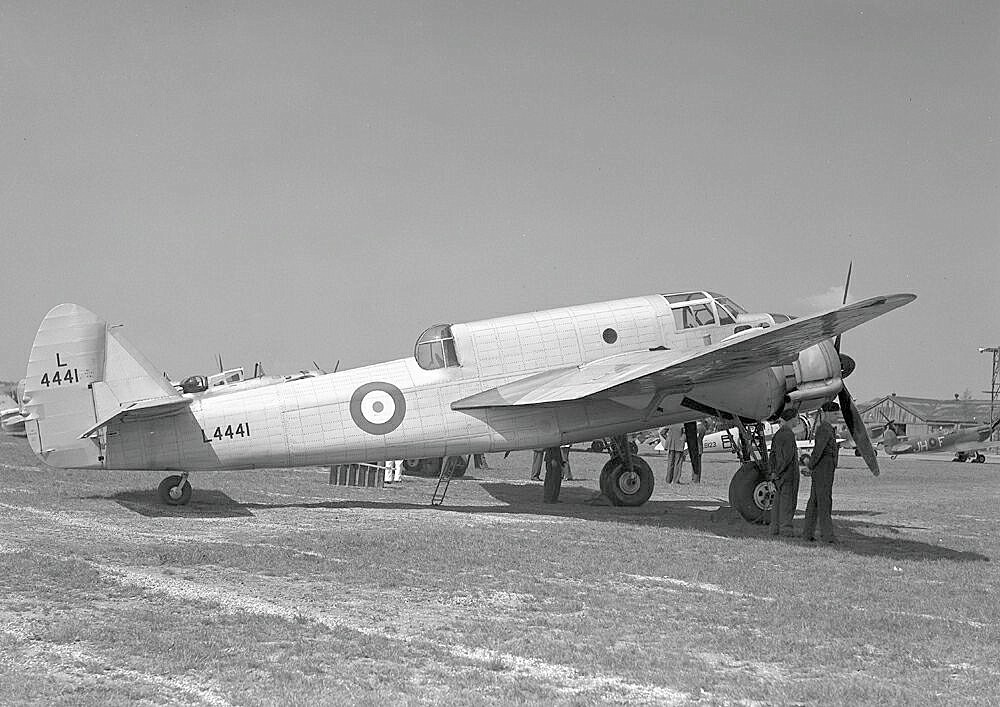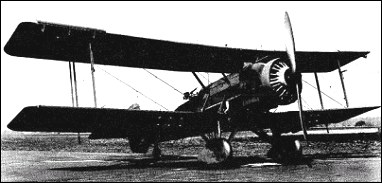|
No. 42 Squadron RAF
Number 42 Squadron was a squadron of the Royal Air Force. It served during the First World War as an army co-operation squadron and during the Second World War in various roles. Between 1992 and 2010, it was the Operational Conversion Unit (OCU) for the Hawker Siddeley Nimrod MR.2, based at RAF Kinloss, Moray, until the Nimrod MR.2's retirement in March 2010. No. 42 Squadron disbanded on 26 May 2011. History First World War Formed on 1 April 1916 from crews of No. 19 Squadron Royal Flying Corps at RAF Filton, No. 42 Squadron spent the First World War flying reconnaissance sorties. Using Royal Aircraft Factory BE.2s (and later Royal Aircraft Factory R.E.8s), the squadron spent time on both the Western Front and the Austro-Italian Front. On returning to England after the war, the squadron was disbanded at RAF Netheravon on 26 June 1919. The squadron was based at La Gorgue in northern France from 1 September to 8 November 1916. Second World War On 14 December 1936, 'B' flig ... [...More Info...] [...Related Items...] OR: [Wikipedia] [Google] [Baidu] |
Heraldic Badges Of The Royal Air Force
Heraldic badges of the Royal Air Force are the insignia of certain commands, squadrons, units, wings, groups, branches and stations within the Royal Air Force. They are also commonly known as crests, especially by serving members of the Royal Air Force, but officially they are badges. Each badge must be approved by the reigning monarch of the time, and as such will either have a Tudor Crown (heraldry), King's or St Edward's Crown, Queen's Crown upon the top of the badge, dependent upon which monarch granted approval and the disbandment date of the unit.Most units/squadrons and bases had their badges updated to the Queen's Crown sometime after her accession, (although in some cases many years elapsed before the badge was updated). Most of the flying units were disbanded after the Second World War, so their badges retained the King's Crown. Queen Elizabeth II promulgated an order in October 1954 detailing that all current badges in use, and from that date on, were to use the Queen's ... [...More Info...] [...Related Items...] OR: [Wikipedia] [Google] [Baidu] |
World War I
World War I (28 July 1914 11 November 1918), often abbreviated as WWI, was one of the deadliest global conflicts in history. Belligerents included much of Europe, the Russian Empire, the United States, and the Ottoman Empire, with fighting occurring throughout Europe, the Middle East, Africa, the Pacific, and parts of Asia. An estimated 9 million soldiers were killed in combat, plus another 23 million wounded, while 5 million civilians died as a result of military action, hunger, and disease. Millions more died in genocides within the Ottoman Empire and in the 1918 influenza pandemic, which was exacerbated by the movement of combatants during the war. Prior to 1914, the European great powers were divided between the Triple Entente (comprising France, Russia, and Britain) and the Triple Alliance (containing Germany, Austria-Hungary, and Italy). Tensions in the Balkans came to a head on 28 June 1914, following the assassination of Archduke Franz Ferdin ... [...More Info...] [...Related Items...] OR: [Wikipedia] [Google] [Baidu] |
Republic P-47 Thunderbolt
The Republic P-47 Thunderbolt is a World War II-era fighter aircraft produced by the American company Republic Aviation from 1941 through 1945. It was a successful high-altitude fighter and it also served as the foremost American fighter-bomber in the ground-attack role. Its primary armament was eight .50-caliber machine guns, and it could carry 5-inch rockets or a bomb load of . When fully loaded, the P-47 weighed up to 8 tons, making it one of the heaviest fighters of the war. The Thunderbolt was effective as a short-to medium-range escort fighter in high-altitude air-to-air combat and ground attack in both the European and Pacific theaters. The P-47 was designed around the powerful Pratt & Whitney R-2800 Double Wasp 18-cylinder radial engine, which also powered two U.S. Navy/U.S. Marine Corps fighters, the Grumman F6F Hellcat and the Vought F4U Corsair. An advanced turbosupercharger system ensured the aircraft's eventual dominance at high altitudes, while also influencing ... [...More Info...] [...Related Items...] OR: [Wikipedia] [Google] [Baidu] |
Hawker Hurricane
The Hawker Hurricane is a British single-seat fighter aircraft of the 1930s–40s which was designed and predominantly built by Hawker Aircraft Ltd. for service with the Royal Air Force (RAF). It was overshadowed in the public consciousness by the Supermarine Spitfire during the Battle of Britain in 1940, but the Hurricane inflicted 60 percent of the losses sustained by the Luftwaffe in the campaign, and fought in all the major theatres of the Second World War. The Hurricane originated from discussions between RAF officials and aircraft designer Sir Sydney Camm about a proposed monoplane derivative of the Hawker Fury biplane in the early 1930s. Despite an institutional preference for biplanes and lack of interest by the Air Ministry, Hawker refined their monoplane proposal, incorporating several innovations which became critical to wartime fighter aircraft, including retractable landing gear and the more powerful Rolls-Royce Merlin engine. The Air Ministry ordered Hawker's ''Int ... [...More Info...] [...Related Items...] OR: [Wikipedia] [Google] [Baidu] |
Bristol Blenheim
The Bristol Blenheim is a British light bomber aircraft designed and built by the Bristol Aeroplane Company (Bristol) which was used extensively in the first two years of the Second World War, with examples still being used as trainers until the end of the war. Development began with the ''Type 142'', a civil airliner, in response to a challenge from Lord Rothermere to produce the fastest commercial aircraft in Europe. The ''Type 142'' first flew in April 1935, and the Air Ministry, impressed by its performance, ordered a modified design as the ''Type 142M'' for the Royal Air Force (RAF) as a bomber. Deliveries of the newly named Blenheim to RAF squadrons commenced on 10 March 1937. In service the Type 142M became the Blenheim Mk.I which would be developed into the longer Type 149, designated the Blenheim Mk.IV, except in Canada where Fairchild Canada built the Type 149 under licence as the Bolingbroke. The Type 160 Bisley was also developed from the Blenheim, but was already o ... [...More Info...] [...Related Items...] OR: [Wikipedia] [Google] [Baidu] |
Bristol Beaufort
The Bristol Beaufort (manufacturer designation Type 152) is a British twin-engined torpedo bomber designed by the Bristol Aeroplane Company, and developed from experience gained designing and building the earlier Blenheim light bomber. At least 1,180 Beauforts were built by Bristol and other British manufacturers. The Australian government's Department of Aircraft Production (DAP) also manufactured variants of the Beaufort. These are often known collectively as the DAP Beaufort. More than 700 Australian-built Beauforts saw service with the Royal Australian Air Force in the South West Pacific theatre, where they were used until the end of the war. Beauforts first saw service with Royal Air Force Coastal Command and then the Royal Navy Fleet Air Arm from 1940. They were used as torpedo bombers, conventional bombers and mine-layers until 1942,Robertson 1976, p. 30. when they were removed from active service and were then used as trainer aircraft until being declared obsolete i ... [...More Info...] [...Related Items...] OR: [Wikipedia] [Google] [Baidu] |
Vickers Vildebeest
The Vickers Vildebeest and the similar Vickers Vincent were two very large two- to three-seat single-engined British biplanes designed and built by Vickers and used as light bombers, torpedo bombers and in army cooperation roles. First flown in 1928, it remained in service at the start of the Second World War, with the last Vildebeests flying against Japanese forces over Singapore and Java in 1942. Design and development Vildebeest Designed against Air Ministry Specification 24/25 for the Royal Air Force (RAF), for a land-based torpedo bomber to replace the Hawker Horsley, the prototype Vildebeest, an all-metal fuselage aircraft with single-bay unstaggered fabric-covered wings and tail, was first flown in April 1928 as the Vickers Type 132, powered by a Bristol Jupiter VIII radial engine.Mason 1994, p. 200. After initial evaluation, the Vildebeest was shortlisted for comparison with the Blackburn Beagle and Handley Page Hare. As the Jupiter VIII was prone to vibration, a ... [...More Info...] [...Related Items...] OR: [Wikipedia] [Google] [Baidu] |
RAF Bircham Newton
Royal Air Force Bircham Newton or more simply RAF Bircham Newton is a former Royal Air Force station located south east of Docking, Norfolk and north east of King's Lynn, Norfolk, England. History The site was first used during the First World War and received the largest British bomber of the time, the Handley Page V/1500. They would have carried out bombing missions against Berlin but the Armistice was arranged before any missions were actually flown. There were several communication squadrons active at the airfield during 1919. The airfield was equipped with one aircraft repair shed and three double bay general service sheds, although these had been demolished by 1937. It had two Belfast hangars, three C Type hangars, three Bellman hangars and ten Blister hangars. It operated through the Second World War as part of No. 16 Group RAF as part of RAF Coastal Command. No. 206 Squadron RAF was one of the squadrons being based there, on maritime patrol duties. Two satellite ... [...More Info...] [...Related Items...] OR: [Wikipedia] [Google] [Baidu] |
La Gorgue
La Gorgue is a town in northern France. It is a commune in the Nord department. The population of La Gorgue in 2019 was 5,639.Téléchargement du fichier d'ensemble des populations légales en 2019 INSEE It was the location of the Beaupré-sur-la-Lys Abbey, founded in 1221, whose grounds were used as a base during |
RAF Netheravon
The Royal Air Force (RAF) is the United Kingdom's air and space force. It was formed towards the end of the First World War on 1 April 1918, becoming the first independent air force in the world, by regrouping the Royal Flying Corps (RFC) and the Royal Naval Air Service (RNAS). Following the Allied victory over the Central Powers in 1918, the RAF emerged as the largest air force in the world at the time. Since its formation, the RAF has taken a significant role in British military history. In particular, it played a large part in the Second World War where it fought its most famous campaign, the Battle of Britain. The RAF's mission is to support the objectives of the British Ministry of Defence (MOD), which are to "provide the capabilities needed to ensure the security and defence of the United Kingdom and overseas territories, including against terrorism; to support the Government's foreign policy objectives particularly in promoting international peace and security". The ... [...More Info...] [...Related Items...] OR: [Wikipedia] [Google] [Baidu] |
England
England is a country that is part of the United Kingdom. It shares land borders with Wales to its west and Scotland to its north. The Irish Sea lies northwest and the Celtic Sea to the southwest. It is separated from continental Europe by the North Sea to the east and the English Channel to the south. The country covers five-eighths of the island of Great Britain, which lies in the North Atlantic, and includes over 100 smaller islands, such as the Isles of Scilly and the Isle of Wight. The area now called England was first inhabited by modern humans during the Upper Paleolithic period, but takes its name from the Angles, a Germanic tribe deriving its name from the Anglia peninsula, who settled during the 5th and 6th centuries. England became a unified state in the 10th century and has had a significant cultural and legal impact on the wider world since the Age of Discovery, which began during the 15th century. The English language, the Anglican Church, and Engli ... [...More Info...] [...Related Items...] OR: [Wikipedia] [Google] [Baidu] |






